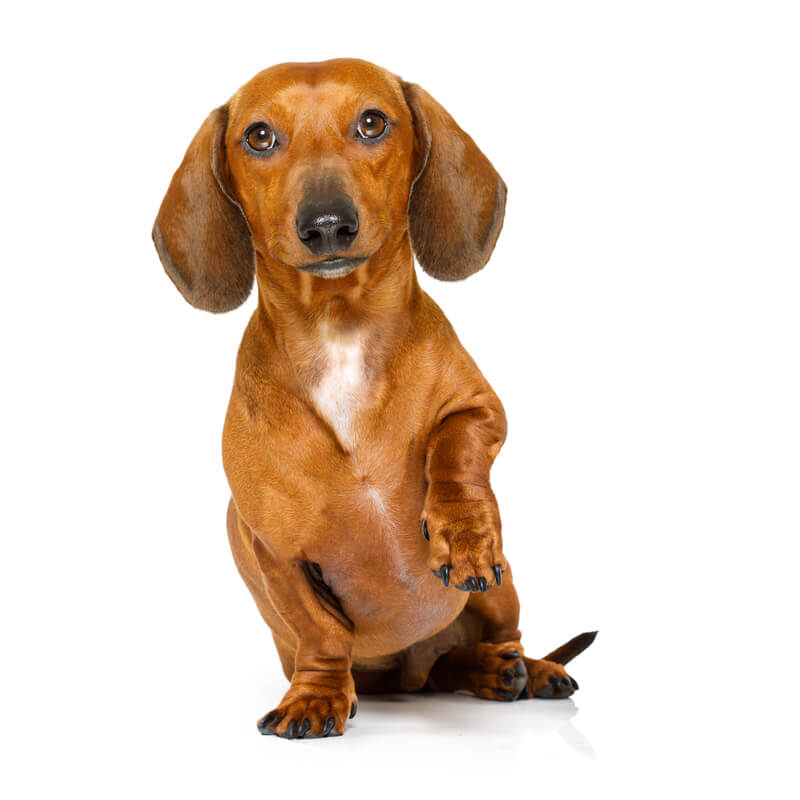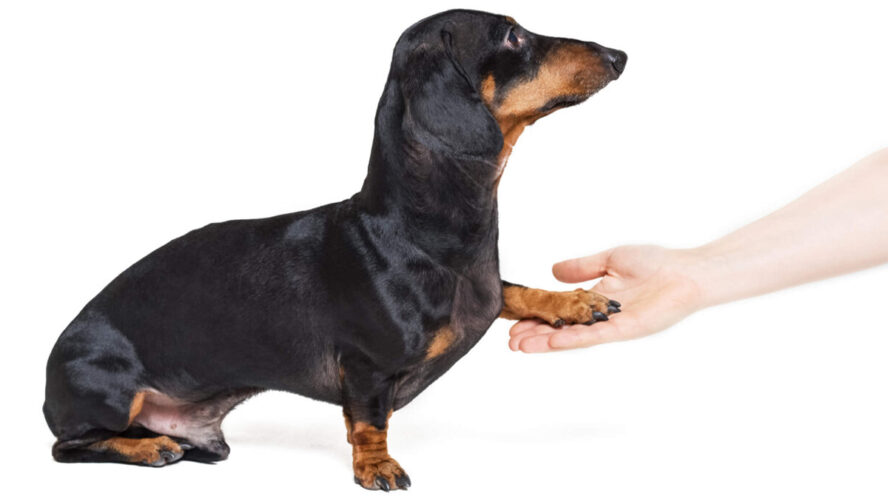Dogs are intelligent and fascinating creatures. You would be surprised at what your dog is capable of besides chasing rodents around and barking. You can teach your dog a lot; dancing, playing fetch, hunting, and some actions that are typical to humans, such as giving a ‘paw shake.’ In this article we will guide you step by step on how to teach a dog how to shake.
While teaching your dog how to shake can impress your visitors and friends, it can also make your dog more obedient and create a stronger bond between both of you.
There are several commands your dog can master like ‘stay,’ ‘sit,’ and ‘come.’ Those few to mention. It is essential to continue to teach your dog new behaviours. It exercises a dog mentally and physically and increases its learning rate.
However, you have to crawl before you can walk, and that implies that your dog needs to learn to sit at your command before advancing to giving ‘paw shakes.’
However, if you have deemed it time to teach your dog how to shake, we have put together some easy techniques that you should apply for a hitch-free training.
Note: The training should consist of three parts. The first part should be introducing the action/idea you want your pet to have.
The second part should be introducing the verbal command while the third part should focus on nailing the idea firmly in the dog’s mind.
Introducing the Idea (Part 1)
How to Teach a Dog to Shake: Step 1
Have a lot of treats ready.
Treats or rewards are essential if you want to pass any message across to a dog. If you’re going to teach your dog to shake, you must have loads of treats ready, and they have to be your pet’s favourite.
Ensure that you don’t over-feed the dog, and that implies that the treats should be in small bite sizes.
Additionally, you must take your time to research for any dog treat that can harm your dog (causing illness or indigestion).
Treats containing xylitol, garlic, macadamia nuts, chocolate, raisins, ethanol, avocado, etc. are not healthy, and some are allergic, for your pet.
Step: 2

Ensure your dog can sit properly.
If your dog can’t sit properly and you want it to shake hands, it’s like putting the cart before the horse. A dog must adequately understand the ‘sit’ command before it can proceed to its paw shakes.
However, when your dog eventually sits, you must not reward it just yet. If you do, it might think you’re teaching it the “sit” command.
Step 3
Grab its attention.
And this doesn’t mean giving it the treat yet. It is a kind of a tease to grab its 100% attention and commitment.
Hold the treat in one hand and make sure your dog sees it. Swing it slowly across its face and nose so that it smells it, but don’t let it grab the treat from you.
Now close your hand around the treat to make a fist – but let the snack still be visible to the dog.
How to Teach Your Dog to Shake: Step 4
Give the ‘Paw’ command.
Or the ‘shake’ command if you like. Make sure it is the command you will always use in asking your dog to shake.
Ensure that you’re holding the treat in the same hand you’re stretching in front of your dog.
How to Teach Your Dog to Shake: Step 5
Encourage your dog by saying ‘yes’ if it begins to fidget.
When your dog sees you holding a treat in front of it, its first action would be to grab it. It will likely begin to fidget.
However, since you are teaching it to shake, if it raises its paw to get the treat, encourage it by saying ‘yes’ before letting it have the treat.
Your encouragement must come with lots of excitement and enthusiasm for the dog to believe it has done something you want.
However, not until it raises its paws to get the snack should you reward it. If it sniffs or mouths your hand, ignore it.
You need a little patience in teaching your dog this skill, and you must do this a couple of times daily until your dog has mastered the art of raising its paw when you give it the ‘Paw’ command.
How to Teach Your Dog to Shake: Step 6

Give your dog rewards, rewards, and more rewards.
As mentioned earlier, the easiest way to pass a message across to a dog is via rewards. Once your pet is doing what you want, like lifting its paw as you give the command, you should reward it immediately.
However, if you want it to lift its paw maybe a little higher than before, you must not reward it until the dog does just that.
That means if you give the ‘paw’ command and your dog lifts its paw lower than you want, you shouldn’t reward it.
However, be patient until it raises its paw as high as you want, then encourage it with a ‘yes!’ and a reward. You can continue this depending on what you want.
Step 7
Hold its paw.
This step is an addition in cases where your dog only lifts its hand but doesn’t paw at the treat you’re holding. You should take your dog’s paw in your hand and hold it for a few seconds (you must hold it gently).
While holding it, you can praise your dog, even after dropping it. That way, your dog will begin to fancy the rewards of pawing at your hand when you give the command.
Part 2 (The Verbal Command)

How to Teach Your Dog to Shake: Step 8
Introduce the verbal command.
This part of the training is essential. If not properly done, your dog may not be able to shake when you give the command.
After it must have mastered raising its paw at the treat you’re holding; this is the point where you introduce the verbal command.
Remember to choose a short command, and you should stick to one for this action lest your dog becomes confused.
The verbal command ‘paw’ or ‘shake’ must be issued immediately after your dog paws at the treat in your hand.
How to Teach Your Dog to Shake: Step 9
Gradually begin to say the command preemptively.
And by this, we mean you can begin to give your dog the verbal command ‘paw’ even before it paws at the treat you’re holding.
Hold a treat in your hand, and as you’re moving your hand towards it, say ‘paw’ or ‘shake.’
Doing this regularly, your dog will begin to understand that the command essentially means it should raise its paw and shake. If it performs accordingly, rewards and praises are essential.
However, if it doesn’t respond on the first trial, keep trying for about 10 minutes. If it still doesn’t paw, you can stop the exercise and continue later so your dog doesn’t become frustrated.
How to Teach Your Dog to Shake: Step 10
Give rewards after completing the command.
Dogs get easily confused. Rewards must be given only in case after the dog has completed the command.
Endeavour not to reward it improperly, or it will automatically think it is being rewarded for the wrong action (from your point of view). Any act a dog was doing before it got a reward will be done over and over because it likes to earn treats.
So, pay attention and ensure you’re rewarding the right action. Plus, patience is essential.
If you get fed up and reward your dog even when it hasn’t performed the work you asked, it will think ignoring you will bring rewards and will do just that the next time.
The best way to help your dachshund live longer?
Watch our video to find out!
Part 3 (Teaching the Dog to Shake without Treats)
How to Teach Your Dog to Shake: Step 11
Gradually remove the treats.
Your dog is used to shaking for treats already, but you cannot always give it those, can you? It is advised to gradually replace treats with praises and hugs or a pat on the head.
You can close your fist and pretend there is a treat inside and say the command. When the dog complies, instead of snacks, praise it or reward it with a few minutes playtime.
Conclusion
I hope you will enjoy this detailed training guide on how to teach a dog how to shake.
After mastery of this command in a comfortable environment, try creating more challenges like commanding your dog to paw in an unfamiliar place. Such situations will help polish your dog’s shaking skills.
If you like, you can change sides. In other words, if you trained your dog to shake with its left paw, you could begin teaching it to do the same with its right through the same process. You will have to start from scratch.
However, you may consider changing commands for different hands like if you used ‘shake’ for the initial training, you might want to use ‘paw’ for the other or vice versa.
Regular enforcing of training is also essential; otherwise, a dog might ‘unlearn’ what it has already learned.
If you want to teach your pooch more commands, read our detailed training articles:


